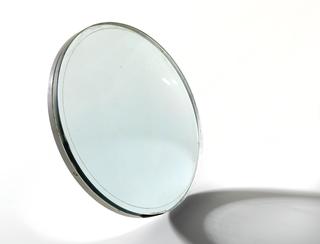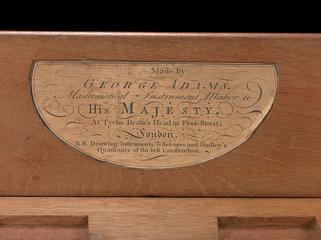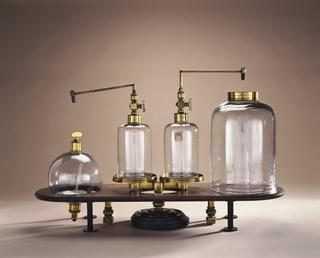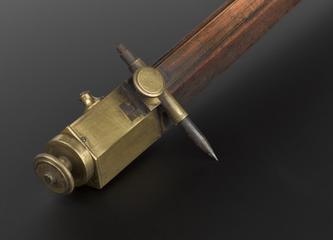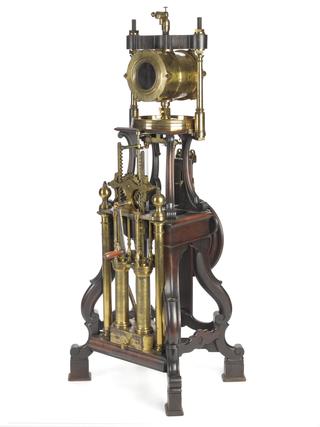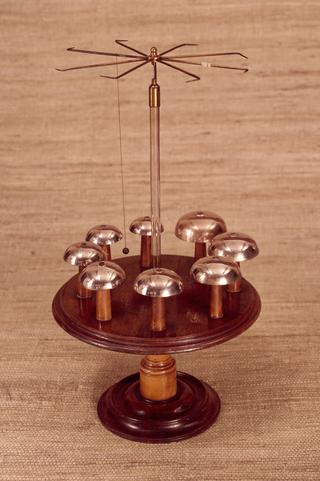
Microtome, 1770.
- maker:
- Alexander Cumming




Microtome in box, c. 1770. A microtome is used for cutting thin slices of specimen for microscopic investigation. Alexander Cumming, a clockmaker to George III, invented and made this device. The specimen was put in the hole and was pressed upwards by a screw. The blade slices the specimen at the top which is then pushed up the required amount by the screw. Although the settings are for 1/500, 1/750 and 1/1000 of an inch, the instrument could not actually achieve this degree of accuracy.
Details
- Category:
- King George III
- Object Number:
- 1927-1461
- Materials:
- ivory, steel, brass bell-metal, mahogany, paper (fibre product) and incomplete
- Measurements:
-
overall (closed): 80 mm x 170 mm x 90 mm
weight: 1.1 kg
- type:
- microtomes
- copyright:
- Unlinked Name
- credit:
- King's College, London
